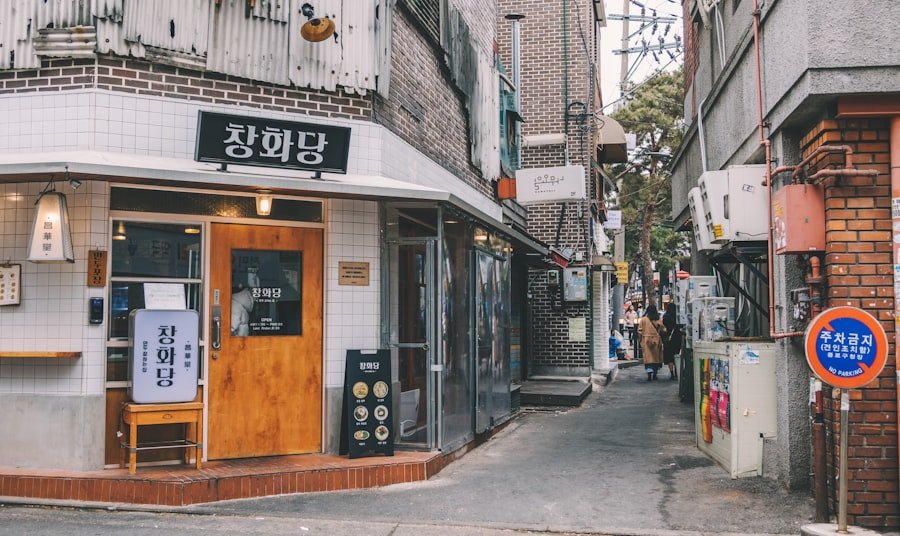

How to Use the Korean Phrase ‘-juseyo’ for “Please give me”
The Korean language is rich in nuances and politeness levels, which can often be a challenge for learners. One of the most essential expressions in Korean is ‘-juseyo’, a suffix that conveys a request or a plea for assistance. The term itself derives from the verb ‘주다’ (juda), meaning ‘to give’.
When you attach ‘-juseyo’ to a verb, it transforms the statement into a polite request, making it an invaluable tool for anyone wishing to communicate effectively in Korean. This suffix is not merely a linguistic formality; it embodies the cultural emphasis on respect and consideration for others, which is deeply ingrained in Korean society. Understanding the significance of ‘-juseyo’ goes beyond mere vocabulary; it reflects the social dynamics of Korean interactions.
In a culture where hierarchy and respect play pivotal roles, using ‘-juseyo’ appropriately can help establish rapport and demonstrate your awareness of social norms. Whether you are asking for help, making a request, or seeking information, incorporating ‘-juseyo’ into your speech signals your intention to engage politely with others. This understanding is crucial for anyone looking to navigate the complexities of Korean communication successfully. Learn Korean in Oslo! NLS Norwegian Language School is now offering classes. Register today.
Table of Contents
ToggleSummary
- ‘-juseyo’ is a Korean word that is used to make requests or ask for something politely.
- In everyday situations, ‘-juseyo’ can be used to ask for items, favours, or assistance in a polite manner.
- There are both polite and casual forms of ‘-juseyo’, and it’s important to use the appropriate form based on the situation and the person you are speaking to.
- Nouns can be added to ‘-juseyo’ to make specific requests, such as “coffee-juseyo” or “menu-juseyo”.
- In restaurants and cafes, ‘-juseyo’ can be used to order food and drinks, or to ask for the bill or the menu.
- In stores and markets, ‘-juseyo’ can be used to request items or ask for assistance from the staff.
- When asking for directions, ‘-juseyo’ can be used to politely request information or guidance.
- In formal settings and business interactions, it’s important to use ‘-juseyo’ to make requests in a polite and respectful manner.
- Common mistakes to avoid when using ‘-juseyo’ include using the wrong form or being too casual in formal situations.
- Polite and respectful ways to respond to requests with ‘-juseyo’ include saying “ne” (yes) or “gamsahamnida” (thank you). Practising and mastering the use of ‘-juseyo’ in everyday conversations can help improve fluency and politeness in Korean language interactions.
Using ‘-juseyo’ in everyday situations
In everyday conversations, ‘-juseyo’ serves as a versatile tool that can be employed in various contexts. For instance, if you find yourself in a situation where you need assistance, such as asking someone to pass you an item or to help you with directions, using ‘-juseyo’ can make your request sound more courteous. For example, if you want someone to hand you a book, you might say, “책 좀 주세요” (chaek jom juseyo), which translates to “Please give me the book.” This simple addition transforms a straightforward request into one that acknowledges the other person’s willingness to help.
Moreover, ‘-juseyo’ can also be used in more casual settings among friends or acquaintances. While it is essential to maintain politeness, the tone can be slightly relaxed depending on your relationship with the person you are addressing. For instance, if you are at a friend’s house and need them to turn down the music, you could say, “음악 좀 줄여 주세요” (eumak jom julyeo juseyo), meaning “Please turn down the music.” This usage illustrates how ‘-juseyo’ can adapt to different social contexts while still conveying respect.
Polite and casual forms of ‘-juseyo’

While ‘-juseyo’ is inherently polite, it is important to note that there are varying degrees of formality in Korean language usage. The suffix itself is considered polite but can be adjusted based on the context and the relationship between speakers. For instance, when speaking to someone of higher status or an elder, you might opt for even more formal expressions such as ‘-주세요’ (juseyo) or use additional honorifics to show greater respect.
This level of nuance is crucial for effective communication in Korean culture. Conversely, among close friends or peers, you might choose to drop the ‘-juseyo’ altogether and use a more casual form of the verb. For example, instead of saying “물 좀 주세요” (mul jom juseyo) for “Please give me some water,” you could simply say “물 줘” (mul jwo), which is more informal and suitable for casual interactions.
Understanding when to use these different forms can significantly enhance your conversational skills and help you navigate social situations with ease.
Adding nouns to ‘-juseyo’ for specific requests
One of the most effective ways to utilise ‘-juseyo’ is by combining it with specific nouns to make clear requests. This practice not only clarifies your intentions but also demonstrates your ability to communicate effectively in Korean. For instance, if you are at a café and wish to order coffee, you would say “커피 주세요” (keopi juseyo), meaning “Please give me coffee.” By specifying what you want, you make it easier for the other person to understand your request and respond accordingly.
Additionally, this structure can be applied in various scenarios beyond ordering food or drinks. If you need assistance with something specific, such as asking someone to lend you their pen, you could say “펜 좀 빌려 주세요” (pen jom billyeo juseyo), which translates to “Please lend me your pen.” This approach not only makes your requests clearer but also showcases your growing vocabulary and understanding of the language.
Using ‘-juseyo’ in restaurants and cafes
When dining out in Korea, knowing how to use ‘-juseyo’ can greatly enhance your experience. In restaurants and cafes, polite requests are essential for ensuring that your needs are met efficiently. For example, if you want to order a dish from the menu, you would typically say something like “비빔밥 하나 주세요” (bibimbap hana juseyo), meaning “Please give me one bibimbap.” This polite phrasing not only shows respect to the staff but also aligns with cultural expectations regarding dining etiquette.
Moreover, using ‘-juseyo’ in these settings can also extend to making special requests or asking for modifications. If you have dietary restrictions or preferences, you might say “고기 빼 주세요” (gogi bbae juseyo), which means “Please leave out the meat.” Such requests are common in dining situations and using ‘-juseyo’ ensures that your needs are communicated respectfully and clearly.
Making requests with ‘-juseyo’ in stores and markets

In shopping environments such as stores and markets, employing ‘-juseyo’ can facilitate smoother interactions with sales staff or vendors. When seeking assistance or information about products, using this polite suffix can make a significant difference in how your request is received. For instance, if you are looking for a specific item, you might ask “이거 어디에 있어요?
좀 알려 주세요” (igeo eodie isseoyo? jom allyeo juseyo), which translates to “Where is this? Please let me know.” This approach not only conveys your request but also invites the other person to assist you willingly.
Additionally, when making purchases or asking about prices, incorporating ‘-juseyo’ can enhance your overall shopping experience. If you want to inquire about the cost of an item, saying “이거 얼마예요? 좀 알려 주세요” (igeo eolmayeyo?
jom allyeo juseyo) means “How much is this? Please let me know.” Such polite inquiries reflect your respect for the staff’s time and effort while also ensuring that you receive the information you need.
Using ‘-juseyo’ when asking for directions
Navigating unfamiliar places can be daunting, especially in a foreign country. However, knowing how to use ‘-juseyo’ when asking for directions can make this process much easier. When seeking guidance from locals, it is essential to approach them politely.
For example, if you need directions to a nearby landmark, you could say “저기 가려면 어떻게 가야 해요? 좀 알려 주세요” (jeogi garyeomyeon eotteoke gaya haeyo? jom allyeo juseyo), which translates to “How do I get there?
Please let me know.” This polite phrasing encourages locals to assist you willingly. Furthermore, using ‘-juseyo’ when asking for directions not only helps you receive accurate information but also fosters positive interactions with those around you. People are generally more inclined to help when approached respectfully.
By incorporating this polite suffix into your inquiries, you demonstrate an understanding of cultural norms while also enhancing your chances of receiving helpful guidance.
Using ‘-juseyo’ in formal settings and business interactions
In formal settings and business interactions, the use of ‘-juseyo’ becomes even more critical due to the heightened emphasis on respect and professionalism. When addressing colleagues or superiors, employing this polite suffix can help establish a positive rapport and convey your commitment to maintaining professional decorum. For instance, if you need assistance from a colleague on a project, saying “도와 주세요” (dowa juseyo) means “Please help me.” This simple yet respectful request fosters collaboration and teamwork.
Moreover, during business meetings or presentations, using ‘-juseyo’ when making requests or seeking clarification demonstrates your professionalism and consideration for others’ time. If you require additional information from a client or partner, saying “이 부분에 대해 좀 더 설명해 주세요” (i bubun-e daehae jom deo seolmyeonghae juseyo) translates to “Please explain this part further.” Such expressions not only enhance communication but also reflect positively on your character as a professional.
Common mistakes to avoid when using ‘-juseyo’
While using ‘-juseyo’ is generally straightforward, there are common pitfalls that learners should be aware of to avoid misunderstandings. One frequent mistake is using it too casually in formal situations or with individuals of higher status. It is crucial to gauge the context and adjust your language accordingly; failing to do so may come across as disrespectful or inappropriate.
Always consider the relationship dynamics before deciding on the level of politeness required. Another common error involves mispronunciation or incorrect verb conjugation when using ‘-juseyo’. Since Korean verbs change based on tense and politeness levels, ensuring that you use the correct form is vital for clear communication.
For instance, saying “가세요” (gaseyo) instead of “가 주세요” (ga juseyo) when asking someone to go somewhere can lead to confusion about your intent. Practising pronunciation and verb forms will help mitigate these mistakes and enhance your overall fluency.
Polite and respectful ways to respond to requests with ‘-juseyo’
When someone uses ‘-juseyo’ to make a request of you, responding politely is equally important in maintaining respectful communication. A common way to acknowledge such requests is by saying “네” (ne), meaning “yes,” followed by an affirmative response that indicates your willingness to assist. For example, if someone asks you for help with their homework by saying “도와 주세요” (dowa juseyo), responding with “네, 도와줄게요” (ne, dowajulgeyo) translates to “Yes, I will help.” This response not only affirms their request but also reinforces a positive interaction.
Additionally, if you are unable to fulfil a request made with ‘-juseyo’, it is essential to communicate this politely as well. You might say “죄송하지만 도와줄 수 없어요” (joesonghajiman dowajul su eopseoyo), meaning “I’m sorry but I cannot help.” Acknowledging their request while expressing regret shows respect for their needs and maintains goodwill in your relationship.
Practising and mastering the use of ‘-juseyo’ in everyday conversations
To truly master the use of ‘-juseyo’, consistent practice in everyday conversations is key. Engaging with native speakers or fellow learners provides invaluable opportunities to apply what you’ve learned in real-life situations. Consider joining language exchange groups or participating in community events where Korean speakers gather; these environments encourage natural dialogue and allow you to experiment with different contexts for using ‘-juseyo’.
Additionally, immersing yourself in Korean media—such as films, dramas, or music—can further reinforce your understanding of how ‘-juseyo’ is used across various scenarios. Pay attention to how characters interact and make requests; this exposure will enhance your comprehension and inspire confidence in using the expression yourself. As you continue practising and refining your skills, you’ll find that incorporating ‘-juseyo’ into your conversations becomes second nature.
In conclusion, mastering the use of ‘-juseyo’ is an essential aspect of learning Korean that opens doors to respectful communication across various contexts. From everyday interactions to formal business settings, this polite suffix allows learners to navigate social dynamics effectively while demonstrating cultural awareness. As you continue your journey in mastering Korean language skills at institutions like NLS Norwegian Language School in Oslo—where dedicated courses focus on practical language use—you’ll find ample opportunities to practise and refine your understanding of expressions like ‘-juseyo’.
Embrace these learning experiences as they will undoubtedly enrich your ability to connect with others in meaningful ways within Korean-speaking environments.
If you want to learn Norwegian, you can register for classes here. We look forward to hearing from you and helping you become fluent in Norwegian.





